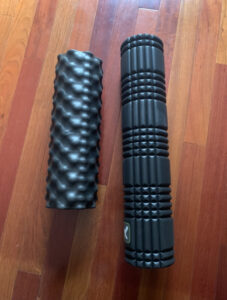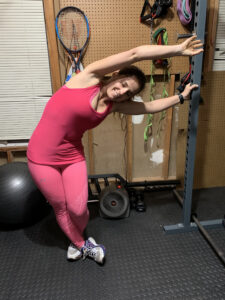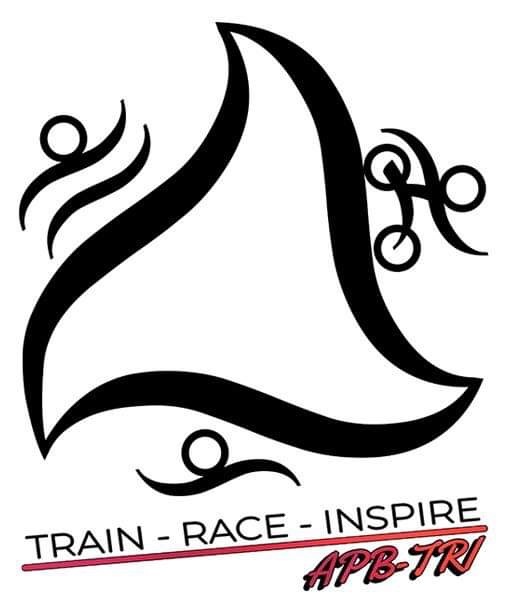Have you developed IT band problems yet? If you are a runner, chances are that you have either already experienced them or they are in your near future. I already gave a high-level overview of these issues in my article about knee pain.
What is IT band?
Full name for the IT band is iliotibial band. It’s a nightmare to spell out every time (and apparently I consistently misspelled it in my knee pain article, for which I profusely apologize), so let’s stick to IT band.
(insert pic of my leg with drawing)
So the IT band are the fibers that go on the outside of your leg from your hip to your shin bone just below your knee.
What causes IT band problems?
Like any other body part made of fibers, it can get too tight. Repetitive bending and straightening of your knee will cause the IT band to rub against bursa (sack of fluid in your knee) and, eventually, an inflamation.
There are certain physical traits that may increase your likelihood of developing the IT band syndrome:
- Bowed legs
- Arthritis in your knee
- Legs of uneven length – I know that all of us have a slight difference in leg length, but in some cases it may be more pronounced
- Overpronation
- Old injuries – ok, so it’s not on ‘official’ websites. However, this is where I find myself. When I was pregnant with mini-me, I had a treadmill accident (embarrassing a bit, but also funny – story for another day) and my hip never recovered. Ever since, my IT band on that side gets overly tight and causes problems
And sometimes you may be doing it to yourself (I sure hope not on purpose):
- Shoes that should have been replaced MILES ago
- Bad training habits – no stretching, lack of warm up, too much running, not enough strength exercises etc.
- Running hills – but it’s the best way to get stronger, so hopefully you can make up for this issue with some preventative actions listed below
- Running on slanted surfaces – like in always slanted the same way. I heard somewhere before that it tends to be issue for people in Big Sur Marathon because you run on one side of the road the whole time. But it may also be because your road is shaped like an n and you are always on the edge, switching sides when you turn around
If you’d like to read some scientific sources on the issue, Cedars-Sinai has a good article.
How to fix them?
The obvious
Let’s start with the obvious solutions, like make sure you have the right shoes. This means both the correct type and that they are not all worn out. Once you sort out your footwear, take a look at where you train. Maybe you need to find a flatter road? Or something easier on the joints?
If you now know that you have addressed the external issues, take a good look at your workouts. Have you been repeating these hills too often? Maybe it’s time for a rest day?
Immediate relief
So it happened: you have the IT band syndrome (or at least as far as you can tell) and you need to do something about that horrible pain. Step one: get some rest and don’t make it any worse. Step two: the ‘usual suspects’ of dealing with injuries – ice down what hurts, put your leg up (like above your heart level up) and stabilize through compression. If it’s really bad, some anti-inflammatory meds may be in order, but you may want to talk to a medical professional before going that way.
Foam roller

Have you met this evil object yet? Personally, I think it hurts like hell. Probably a good indicator that I really need to use it… I strongly recommend you use it daily if you are prone to having IT band issues.
Stretches

Sitting on the ground, put one leg over the other and twist. Push your elbow against your knee. I used to keep my other leg straight, since I thought it was just a back stretch. That is until Diana told me to bend it in. This made me feel stretch in the IT band. Yay!

This one seems self-explanatory: lean your hips in, while using an arm to hold your upper body up. Easy to do, as long as you remember not to stick your butt out.

So this one is harder. You have probably seen this stretch done without any support. I don’t know about you, but I don’t have enough balance to do it without assistance. Diana suggested putting my hands against the wall. It helped. A lot. You can probably see that my right foot is bent in, which is an uncommon variation. I will address this next week 😉.
Keep up the good work and remember to stretch!
